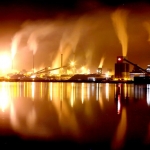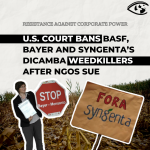Protestors Halt Copper Alloy Plant In Sichuan Province

Protestors have forced Sichuan Hongda, a major metals and chemicals company, to cancel plans to build a $1.6 billion copper alloy plant in Shifang city in southwestern China, because of pollution concerns. The halt has been hailed as a major victory by environmental activists against corporate and government power.
Shifang hit the news in 2008 when it was devastated by the 2008 earthquake in Sichuan province that killed 69,000 people. Hongda, which traditionally sold lead, phosphate and zinc products to domestic customers, saw its revenue drop dramatically after the catastrophe.
In 2011 the company decided to start construction on the Shifang smelter and plant to diversify its production into molybdenum metal, molybdenum trioxide and copper cathodes, to be refined from raw materials mined in Tibet. The company has hoped to make 1.38 billion yuan ($217 million) in profits once the plant was completed in four years time.
"Huge, gray slag heaps are piled up between a dusty side road and a large river, smelling faintly metallic and providing a stark, moon-like landscape contrast with the verdant fields nearby," wrote a Reuters reporter who visited the plant just outside Shifang.
Protest graffitti appeared on local walls in recent months by citizens worried about the potential impact. "We will sacrifice ourselves for the people of Shifang," read one slogan that was photographed and circulated on Weibo, a major Chinese social networking site. "We are the post-90 generation," a reference to those born after the 1989 Tiananmen Square protests.
In early July, thousands of students and local people, took to the streets in a three day clash with police. Dozens of people were arrested after tear gas was used to quell the protests. (A detailed account with photos is available on Offbeat China)
"I think it is civic awareness and strong social responsibility that encouraged us," one recent high school graduate told the Financial Times. "Shifang is a small place - you can cycle across town in just 10 minutes - everyone knows each other and is fairly close. We love our town."
At first the government authorities condemned the protests. "When you are poor you need to think about how to change. We should not trust paper tigers. They are cruel and they only feed us protests. The Communist party is taking us down a road that everyone can benefit from," read an official statement.
But as the protests grew, the city decided to do damage control. "The local government will definitely carry out supervision during the entire process of constructing the project. If the company fails in the environmental protection assessment, the local government would not allow it to go into production," Xu Guangyong, the mayor, told protesters.
One of the reasons that the clash occurred was the lack of consultation with the local community, say experts. "The time has passed when you can simply move into an area without any public participation. But currently very few channels exist for such robust negotiations to happen among stakeholders," Ma Tianjie of Greenpeace China told Reuters.
The Shifang protest is not the first major environmental protest in China, although it appears to be the most successful to date. Citizens of Xiamen in Fujian province rallied against a paraxylene plant in 2007 and 12,000 citizens of Dalian in Liaoning province, took to the streets in August 2011 to stop a petrochemical plant being build by Fujia Dahua Petrochemical Company. Although the Dalian project was halted initially, work has now resumed.
- 204 Manufacturing



